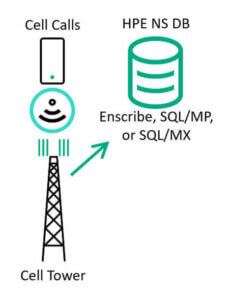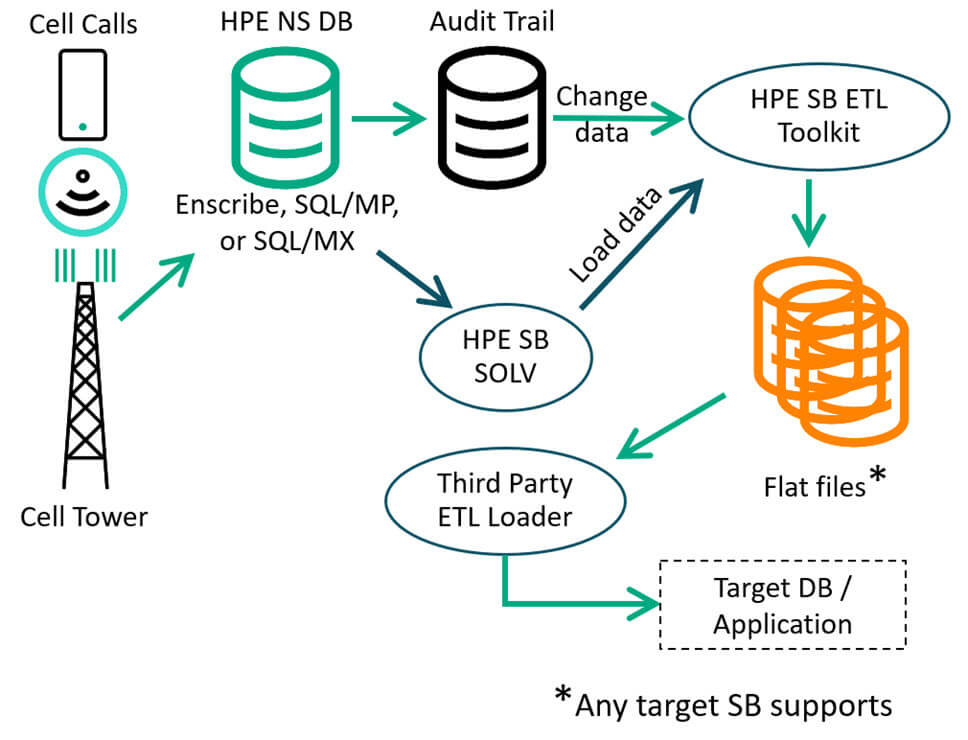- About
- Solutions
- Essentials
- Utilities
- Publications
- Product Delivery
- Support


Figure 1 — Telco’s Original Architecture
A large telecommunications (telco) company based in Africa is servicing a growing user base, providing cell services, call detail record (CDR) billing, an online game show, and card recharging (talk minute reloading) on various applications with an existing replication engine on HPE NonStop systems.
Managing the billing application became difficult. The growing customer base made the billing application more compute-intensive and there was no graphical user interface (GUI) or simple point-and-click method to manage the application. The billing application’s controls were not user-friendly. The telco did not have a method of loading the HPE NonStop data changes into Teradata without interrupting the HPE NonStop Server’s existing operations. Taking the billing application offline to quiesce the database would mean lost revenue and disable customers from purchasing additional minutes. It would also mean a disruption to the telco’s internal billing processing. The telco needed a way to incorporate this data transformation and loading with its existing billing operations in one architecture.

Figure 2 — Final Architecture
Note: Shadowbase also supports writing to comma-separated formats (CSV), any ODBC target platform or database, and any unsupported target environment accessible via HPE Shadowbase User Exits. For more information, see: Supported Databases and Platforms.
Contact us or your HPE Shadowbase representative, and learn how Shadowbase software will benefit you.
Related Solution Brief: ![]() HPE Shadowbase SOLV Product Suite Solution Brief
HPE Shadowbase SOLV Product Suite Solution Brief
Related White Paper: ![]() HPE Shadowbase SOLV Product Suite — Online Database Loading, Copying, Synchronizing, and Unloading
HPE Shadowbase SOLV Product Suite — Online Database Loading, Copying, Synchronizing, and Unloading